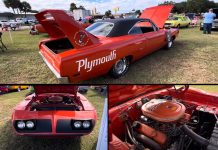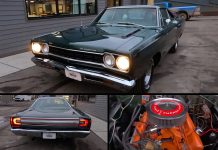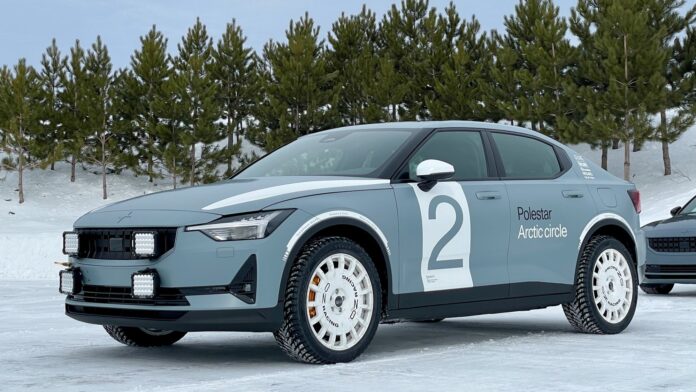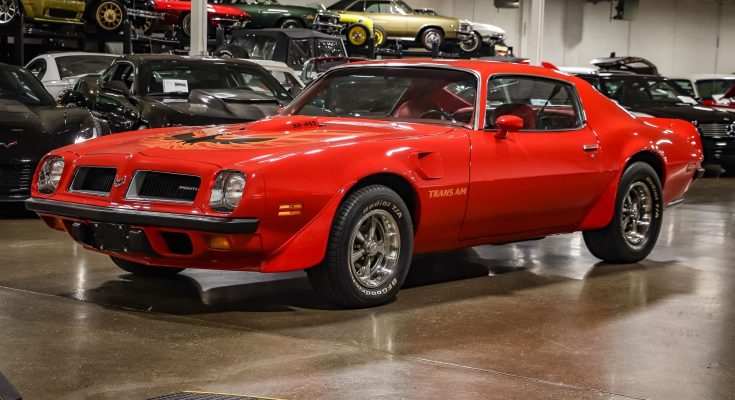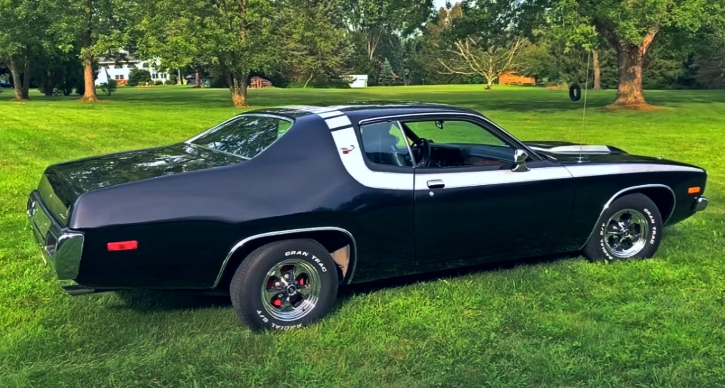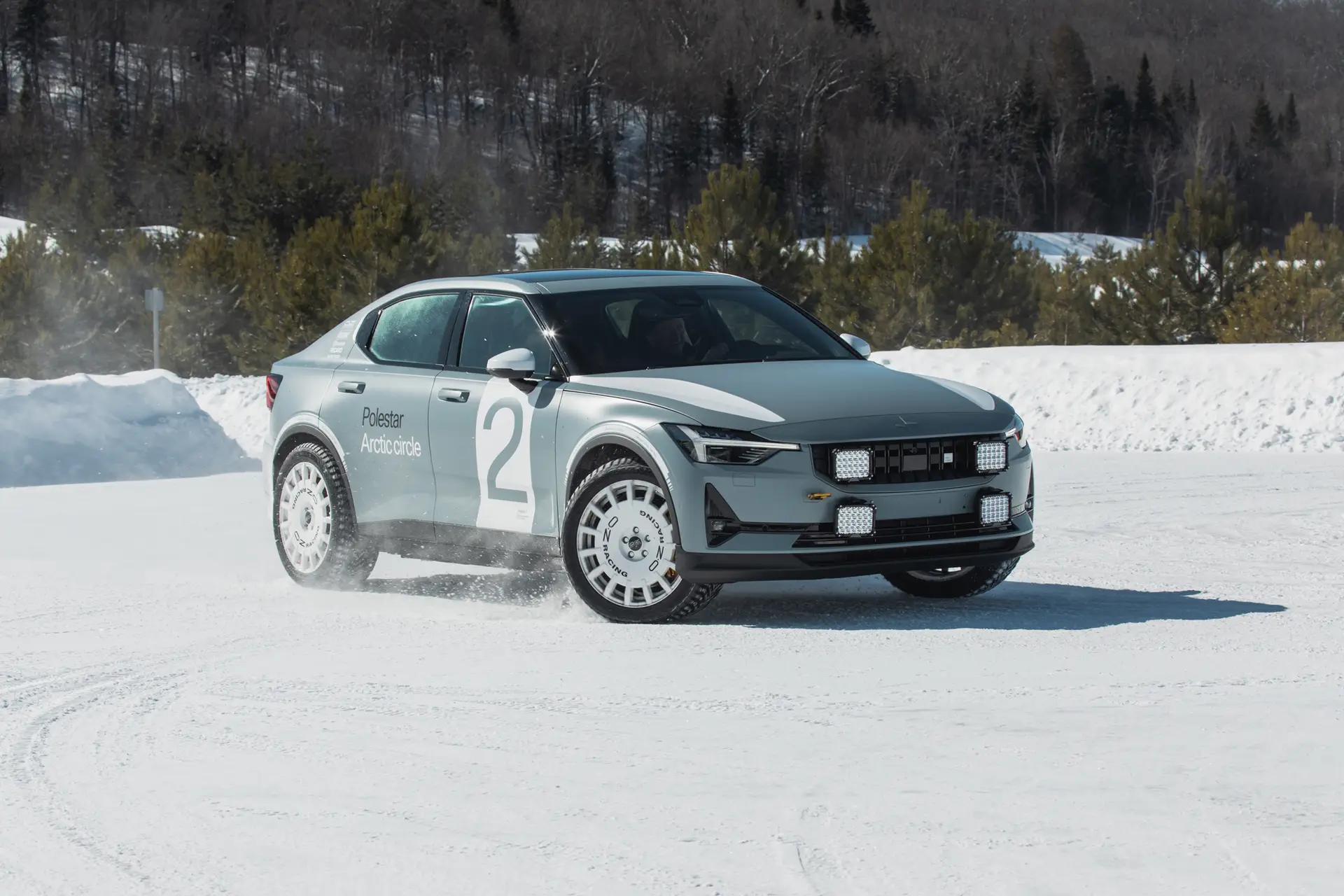
Pretty much everybody crashed.
Let me set the stage a bit: Polestar had flown a bunch of journalists/yahoos out to Circuit Mécaglisse, a sprawling motorsport facility located about two hours north of Montreal to drive the dual-motor Polestar 2 on ice and test out its all-wheel-drive capabilities. Collisions on media drives aren’t unheard of, but they’re not exactly common. On this day, though, I lost track of the number of times one of us—myself included—wound up smacking the electric liftback into a snowbank.
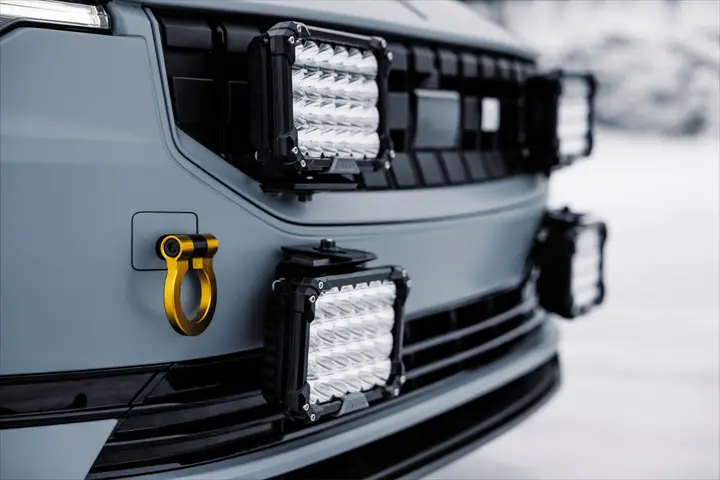
Mind you, this wasn’t really the fault of the car; the Polestar 2 is, by normal roadgoing EV standards, quite a capable performer on ice, especially considering the ones we drove were wearing unstudded Michelin X-Ice Snow tires. Rather, it reinforced what you probably already know. Driving on ice (well) is really hard.
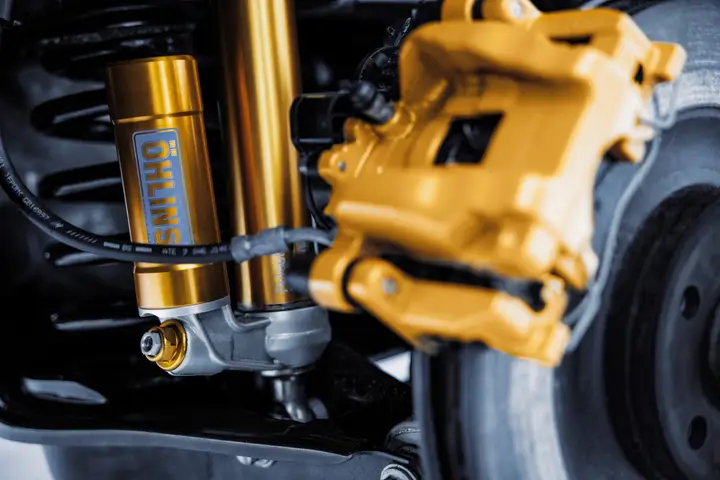
Despite this, the company decided to let us cap the day off with a go in the Polestar 2 Arctic Circle, a one-off concept shipped directly from Sweden modified specifically for frigid, low-grip conditions. Thankfully, this one wasn’t quite as easy to crash. With studded tires and a raised and retuned suspension, the Arctic-spec Polestar takes already-good bones and hones them into a confident and graceful figure skater of a car. As a bonus, it also looks cool as shit, rocking OZ Racing wheels and quad fog lights that make you feel like a real rally driver, even if your winter driving experience starts and ends with that one time it snowed in LA.
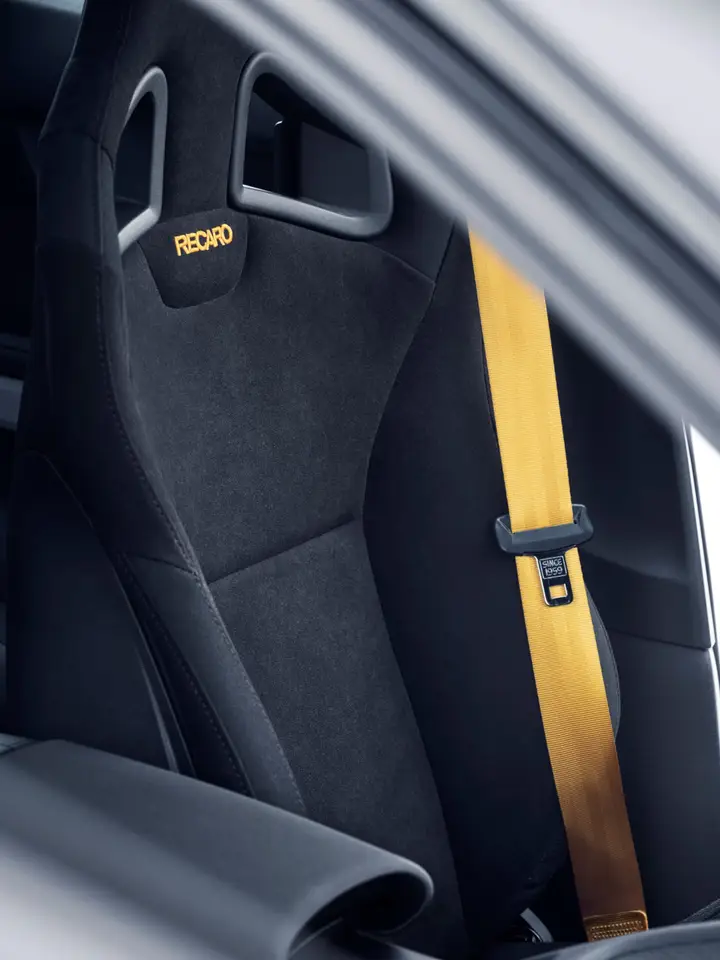
Polestar 2 Arctic Circle Specs
- Base price: N/A
- Powertrain: 78-kWh lithium-ion battery | dual permanently synchronous electric motors | 1-speed transmission | all-wheel drive
- Horsepower: 469
- Torque: 502 lb-ft
- Seating capacity: 5
- Quick take: Turns out, sticking studded tires onto a rally driver-developed chassis makes a great ice car. Go figure.
- Score: 8.5/10
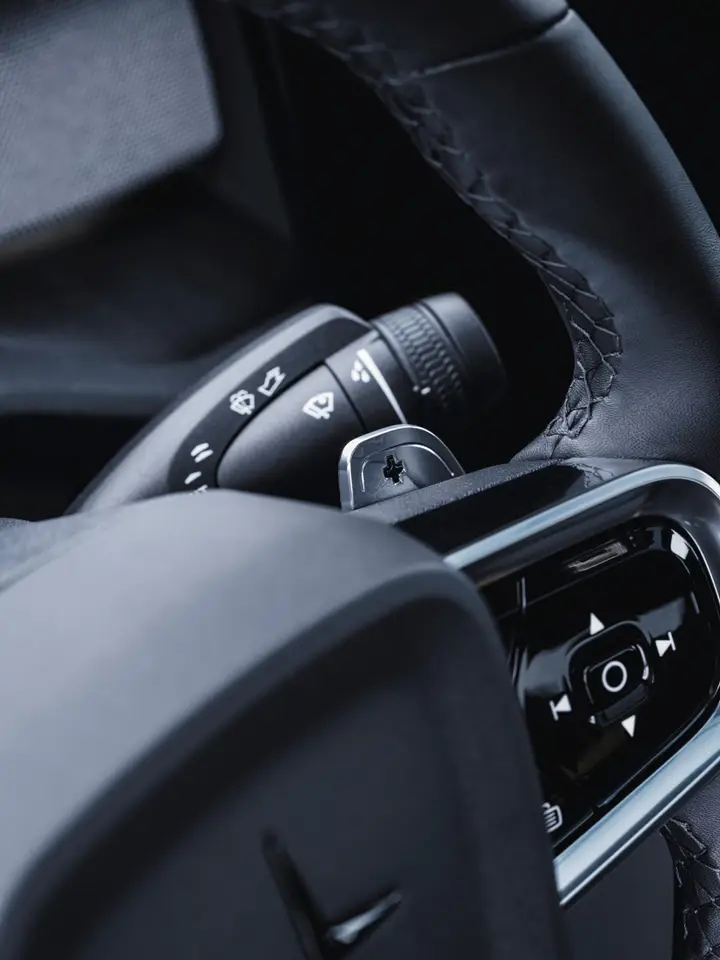
What’s Different?
Contrary to what the stickers, wheels, and lights might have you believe, the Arctic Circle Polestar isn’t actually that different from a regular Polestar 2 underneath, a testament to how competent the base car is already as a snow-driver. Based on a Long Range dual-motor 2 with the Performance Pack, the ride’s been raised 1.18 inches. The electric motors have been cranked up to make 469 horsepower and 502 lb-ft of torque, up from 408 hp and 487 lb-ft in the regular street car and practically matching the figures of the canyon carving Polestar 2 BST. Three-way Öhlins dampers were designed and tuned specifically for this car and are set 30% softer than they are on the regular Polestar 2. Strut braces were added front and rear for better rigidity while four-piston Brembo brakes up front are the same as the ones that come with the retail Performance Pack car.
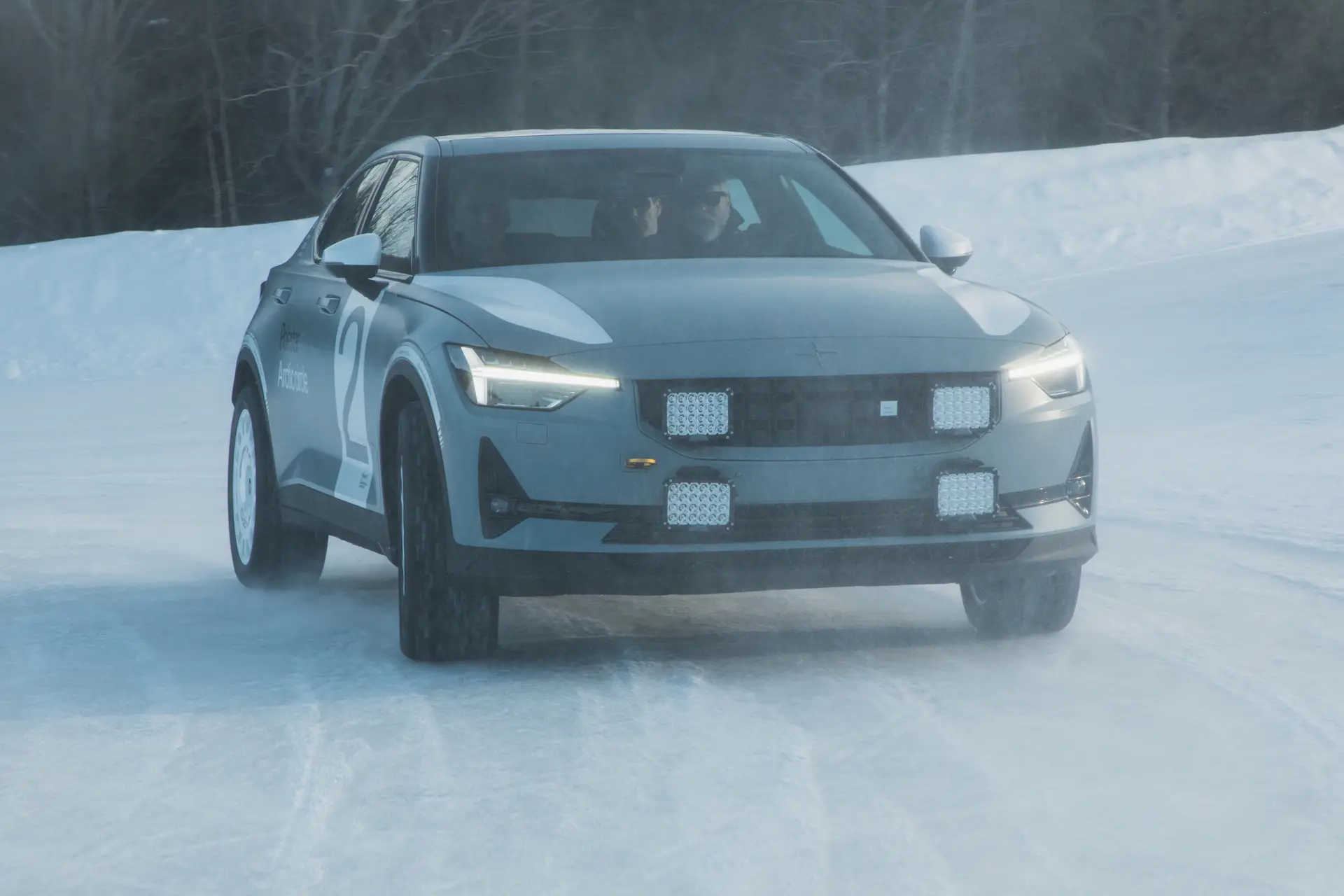
Most crucially perhaps, the Arctic Circle wears studded winter tires. Specifically, a set of Nokian Hakkapeliitta 10 EVs: a street-studded tire made for electric cars by a Finnish brand with a reputation among Canadian drivers for making some of the best (if not the best) winter rubber money can buy. They even have a nickname up here—Hakkas. I happen to run a set of R5s on my personal vehicle and can report that they are indeed excellent.
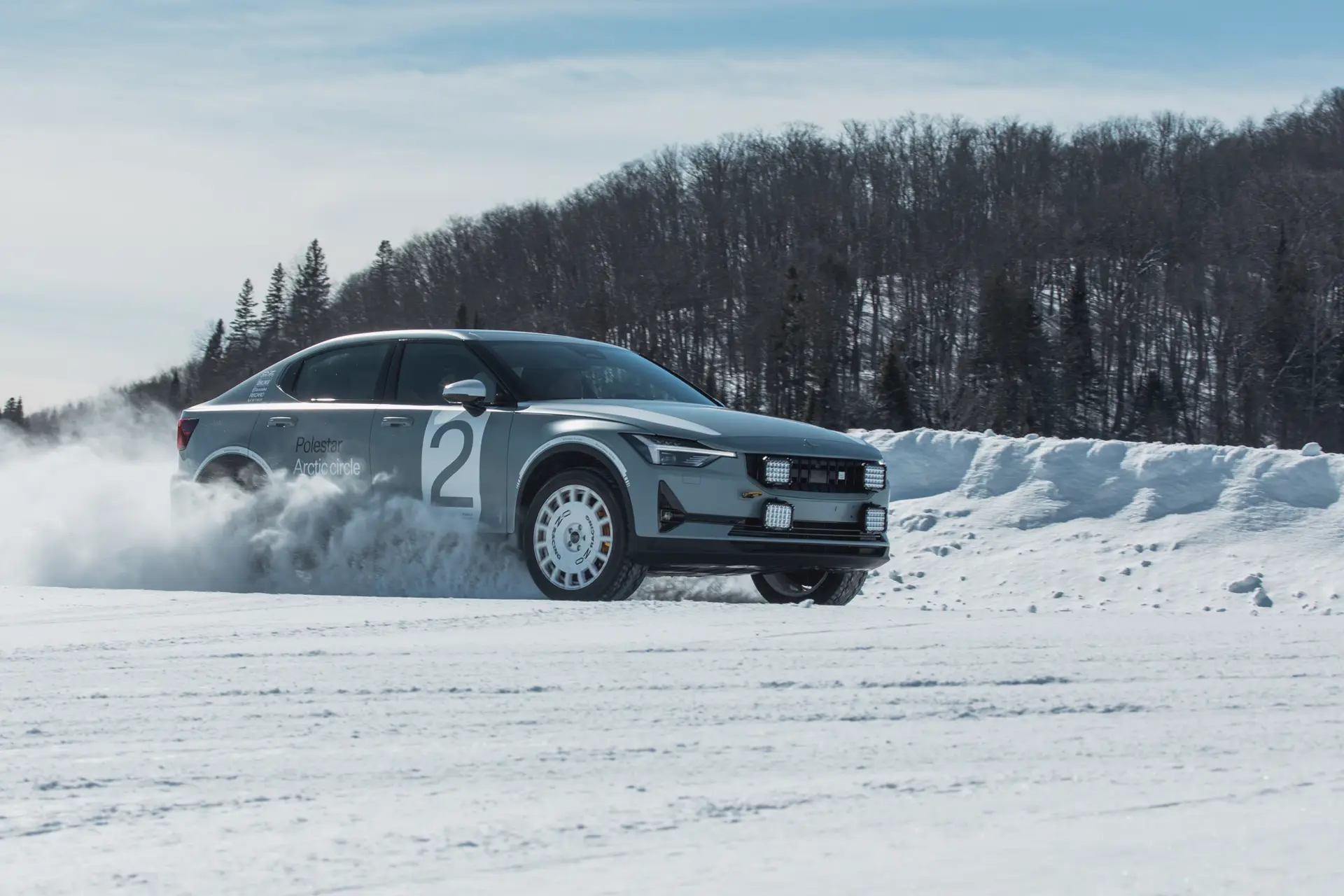
Anyway, back to the car.
Even if the Arctic Circle was a complete dud as a driving machine, its existence would still be justified by the aesthetics alone. Those fantastic studded tires are wrapped around some arguably even more fantastic 19-inch OZ rally wheels, while four Stedi Quad Pro LED lights up front further set it apart as a cold-weather Dakar edition of Polestar’s compact sedan. What with its Thor’s hammer headlights and chiseled body inherited from Volvo, the 2 was already a handsome car as-is but in Arctic form, it is hands down one of the coolest looking cars I’ve ever driven.
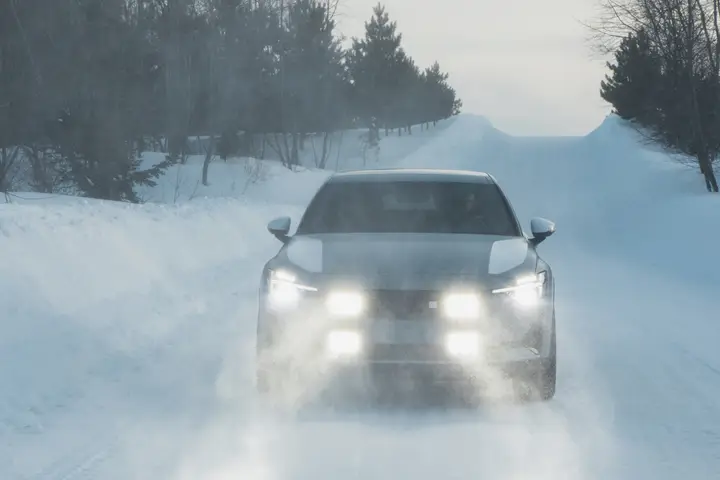
There’s also a carbon fiber front skid plate to protect its underside from hard impacts, while the only real interior modifications are a pair of front bucket seats from Recaro.
Driving the Polestar 2 Arctic Circle
Even without the Arctic Circle mods, the Polestar 2 performs more than admirably on ice. The company’s chief chassis engineer happens to be trophy-winning rally driver Joakim Rydholm, and his influence really does shine through in the way the 2 carved over the iced-out race circuits of Quebec. It felt nimble, responsive, fun, and pliable. Once grip is gained, chaining a bunch of corners together was easy, while the Öhlins handled the baby roller coaster-like elevation changes of Mécaglisse competently and with little discomfort or complaint.
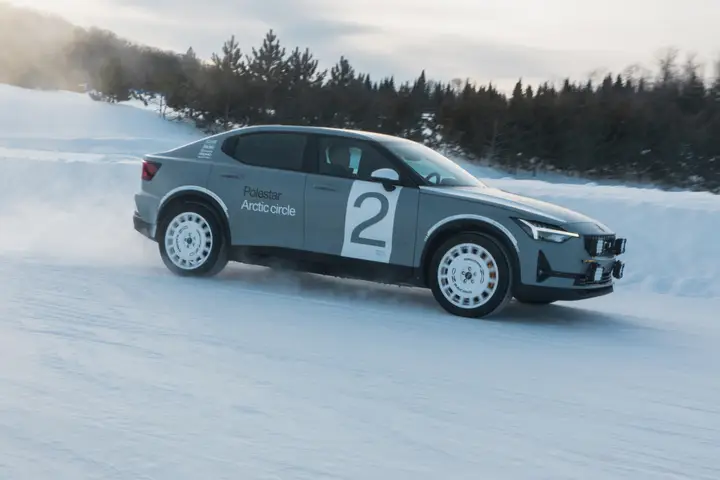
All of this is elevated and idiot-proofed to an even more entertaining degree with the Arctic Circle. The first thing you notice getting into its purposeful driving position is Recaro’s bottom bolster getting in the way of ingress a bit. Once you’re seated, things don’t feel, look, or sound all that different than the regular Polestar 2 initially. All of the street car’s interior trim is intact, drive modes are still controlled via the same touchscreen rather than a panel of intimidating, sticker-labeled switches, and there’s no roll cage to climb past. Get it out onto the ice and push it a bit, though, and the “Arctic” bit of this car makes itself known—especially its studded tires.
Moves that would’ve been an am-I-gonna-crash crapshoot in the regular car became fluid, controllable, ego-boostingly big slides in the AC. Guiding it into a quick left-then-right bus stop flowed seamlessly into a long, downhill right sweeper with an artful wag of the tail on both changes of direction. It still required a fair amount of concentration to drive smoothly and quickly, but it’s a much grippier affair than the non-Arctic model.
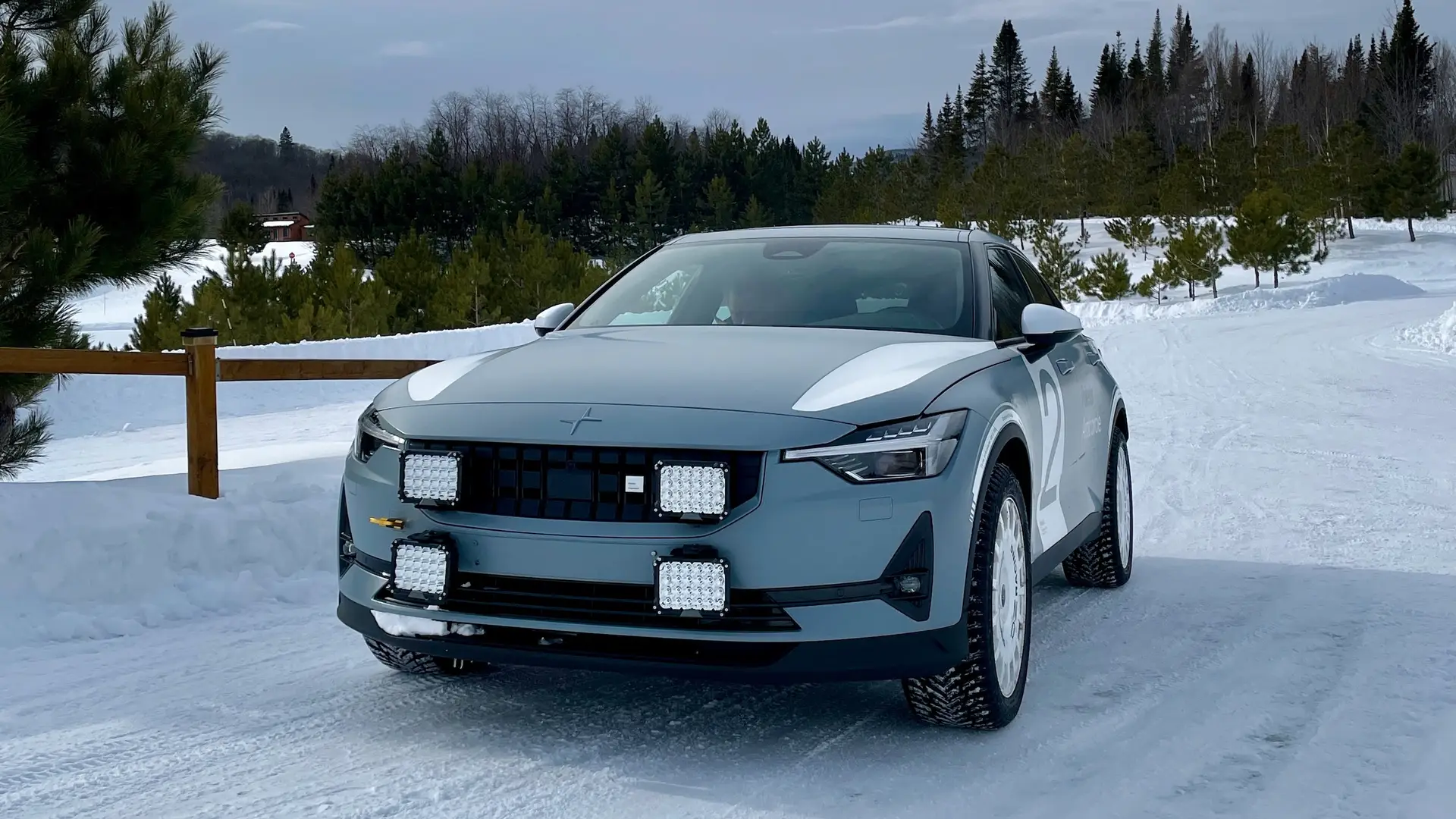
Most of this increased stability, of course, came down to the studded rubber’s ability to dig into the ice, but it also highlights just how good the base car’s rally-pedigree chassis is. Even more impressive when you remember that this is, at the end of the day, an EV with a terribly heavy battery to lug around. The Arctic’s increased firepower—er, voltpower?—meant more urgent surges in between the bends as well.
It’s massively capable for what it is, but I wouldn’t call it a complete rally monster. Traction control limits torque significantly if you apply throttle with the steering wheel turned too much, which kinda ruins the fun at times. This is a finesse car which requires planned throttle inputs and measured, gentle steering movements. Wantonly chuck it in and floor it and you’re going to have a bad time. Just like the BST and, more forgivably, the regular Polestar 2, steering feel is nonexistent, making this entire exercise feel a bit like a video game—one of the world’s best simulators, to be clear, but a video game nonetheless. On the other hand, this decidedly not-too-extreme personality also makes it accessible. Anyone with a reasonable grasp of low-traction car control could jump in, have a boatload of fun, and not feel tired or beat up.
The Point
And that’s really the entire point of this car: boatloads of fun. It certainly won’t be a car mere mortals will be able to buy any time soon since the company explicitly says in its literature, “The Polestar 2 Arctic Circle is a unique showpiece and will not be put into customer production.”
That’s not to say it doesn’t matter, though. There’s a line of thinking that says once the world goes electric, modding and tuning will die. In a way, the Polestar 2 Arctic Circle proves that doesn’t have to be the case. Most of the modifications made to create this car aren’t super drastic—that’s to say, a Polestar owner could probably make a pretty close copy themselves if they really wanted to. And the resulting performance boost, albeit in a very particular environment, is undeniable.
For those not interested in tuning, the Arctic-spec Polestar 2 exists to connect Polestar to its Swedish roots and show just what the automaker is capable of. Admittedly, it’s an important exercise. It exists to remind us that if the Polestar 2 is just a power boost and a set of studded tires away from being phenomenal fun on the ice, the regular Polestar is a more capable winter warrior than most might assume. Taking things one step further: if I was able to keep it in one piece, so can you.



